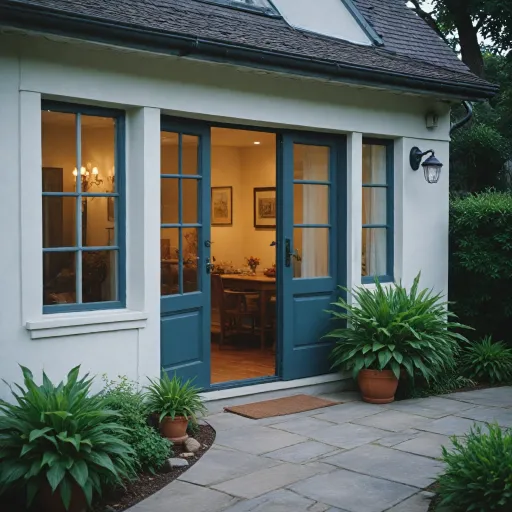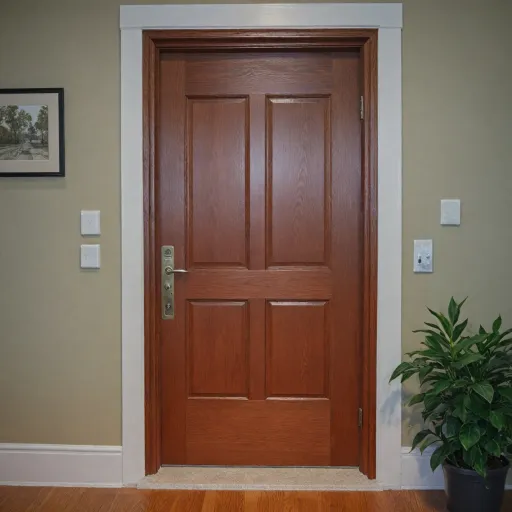
Understanding Laser Motion Detectors
How Laser Motion Detectors Work and Their Core Components
Understanding laser motion detectors is crucial to optimizing home security effectively. Fundamentally, these devices operate by emitting a laser beam across a specified area, such as a driveway or perimeter. This beam is unbroken until an object of a certain size moves through it, triggering the sensor.
Key Elements of Laser Motion Detection Systems
- Laser Emitter: This component generates the laser beam, projecting it across the detection area, such as a driveway or gate.
- Receiver: Positioned opposite the emitter, the receiver detects changes in the beam caused by movement.
- Sensor: Part of the receiver, this examines alterations in the laser beam's path, which may indicate motion.
- Alarm System: Upon detecting interruptions, the sensor sends a signal to an alarm system or security camera to alert homeowners.
Attributes of the Laser Beam
- Range: Often, these systems have a long range, making them suitable for large areas requiring surveillance.
- Detection Area: Although laser beams are precise, they cover a wide range when utilized strategically.
Incorporating laser motion detectors into your home security system requires an understanding of these features. This can enhance the view and coverage offered by security cameras. For those interested in enhancing specific areas like basement windows, check out this detailed guide on basement window security enhancements. The next sections will delve into how laser motion detectors can be integrated with other technologies and the range of benefits they offer for home security enhancement.
Benefits of Integrating Laser Motion Detectors with Security Cameras
The Added Layer of Security with Camera Integration
Integrating laser motion detectors with security cameras can significantly enhance your home security setup. This combination doesn't just rely on one form of detection; it integrates the strengths of both technologies for a more secure home. Here's how it works:- Immediate Alerts: When a laser beam is interrupted, it triggers the sensors, which then communicate with the connected security camera. This results in immediate notifications and activates a corresponding alarm to deter potential intruders.
- Enhanced Detection Accuracy: The laser's precise detection area and long-range capabilities make it ideal for monitoring large perimeters such as a driveway, gate, or wall. When combined with cameras, this offers a comprehensive view, covering blind spots that might otherwise be missed by traditional cameras.
- Customizable Settings: By integrating sensors, you can customize detection settings based on object size, detection range, and even time-of-flight to minimize false alarms. This ensures that you are only alerted to significant threats, rather than common wildlife or environmental changes.
- Scalable Options: From home gardens to large estates, the combination of laser detectors and cameras can be scaled according to the size of the property. This wide range of applications provides flexible solutions whether you're using a single sensor to cover a narrow entrance or a series of beams to protect an extensive landscape.
Installation Tips for Laser Motion Detectors
Optimal Setup for Laser Motion Detectors
Proper installation of laser motion detectors is key to maximizing their efficiency in monitoring and securing your property. Before commencing, understand that the system consists of a laser beam that acts as an invisible tripwire. Here are some crucial tips to ensure an effective setup:
- Determine the Detection Area: Identify the key areas you want to cover, such as your driveway, gate, or perimeter. The laser beam has to be strategically positioned to cross potential entry points effectively.
- Consider the Range and View: Laser sensors offer a wide and long-range detection. Assess if the supplied sensors have a sufficient range to navigate the layout of your property and cover the necessary areas.
- Position the Detector and Receiver: The laser and its receiver should be placed facing each other on solid structures like walls to minimize disruption to the beam’s path. Make sure the path of the beam is unobstructed to reduce false alarms.
- Utilize Existing Infrastructure: When possible, use the existing cable pathways and structures to minimize installation disruption and costs.
- Customizing the Beam: Adjust the height and position to avoid interference from small animals, while ensuring adequate protection from potential intruders. The beam should be configured to account for object size which triggers the motion detector alarm.
- Weather and Environmental Factors: Consider factors such as weather conditions (e.g., fog, rain) that may affect the infrared beam’s reliability. Learn how to calibrate the system to maintain performance across different conditions.
These tips help ensure the laser motion detector’s optimal performance by using strategic placement and calibration tailored to specific environmental and property characteristics. For those who prioritize privacy and compliance, it is essential to be aware of relevant security policies that may affect how you can use these systems within your home.
Common Challenges and Solutions
Addressing Installation Hiccups and Solutions
When integrating laser motion detectors into your home security system, especially for a driveway or perimeter, there are a few potential challenges you may face. Tackling these early can save time and enhance overall detection efficiency.
- Alignment of Devices: Incorrectly aligned laser sensors can lead to false alarms. Ensure that the beam reaches the intended receivers to minimize disruption.
- Choice of Location: Placing the sensor in a poor spot can limit its view and range. Test different locations, avoiding obstacles that might disrupt the infrared beam.
- Distance Limitations: Some long-range detectors need additional equipment or adjustments for optimal function. Consider factors like the detection area's object size and how it could affect time flight.
- Effective Coverage: A wide coverage area is vital. Opt for detectors that supply a wide range to cover more ground and ensure protection for critical areas.
- Maintaining Privacy: Ensure that your setup complies with local privacy policy regulations to avoid legal complications. Appropriately adjust the motion detector settings to manage sensitive areas.
By anticipating these challenges, your system can function smoothly, combining the long range capabilities of lasers with cameras to bolster home security. Don't let potential issues derail your efforts to establish a comprehensive alarm system.
Comparing Laser Motion Detectors to Other Motion Detection Technologies
Comparing Laser Sensors to Infrared Motion Detectors
When deciding between laser sensors and infrared motion detectors for your home security system, it's crucial to understand the distinctions and advantages of each technology. Both play a pivotal role in enhancing security, yet they cater to different needs and environments.
Sensitivity and Range: Laser beam detectors tend to have a more precise range due to their focused beam. This allows them to cover specific areas like a driveway or perimeter with pinpoint accuracy. In contrast, infrared detectors often cover a wide range, detecting motion based on heat changes within the detection area, which can be ideal for general surveillance.
Detection Capabilities: Laser sensors, utilizing the principles of time flight, offer advanced capabilities in detecting object size and movement speed. Infrared detectors, however, might struggle with such intricacies but perform well in detecting human heat signatures, making them suitable for walls and doorways.
Installation Flexibility: The installation process and position affect the effectiveness of both technologies. Laser systems often have a straightforward setup with a receiver and cable infrastructure while ensuring they're not obstructed by objects in the detection area. Infrared systems, however, are typically mounted on walls with no need for a clear path, but may have limitations depending on the environment's temperature fluctuations.
Privacy and Intrusion Prevention: Considering privacy, laser sensors are less likely to intrude on personal privacy policy concerns as they focus on specific paths like a gate long range. Meanwhile, infrared detections often scan broader areas, making them more susceptible to overlooking minor intrusions if the object size does not significantly alter the heat map.
Alarm Integrations: Both systems can seamlessly integrate with alarm systems to provide real-time warnings. The choice between them largely depends on whether you prioritize targeted detection with a laser or broader coverage with infrared beam technology.
Ultimately, choosing the best motion detector involves assessing the specific needs of your property, the environmental conditions, and how each system's strengths can help enhance your overall security.













